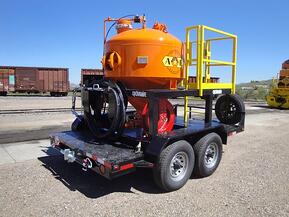 Pneumatic conveying systems have had a rich history in industrial processes and plants.
Pneumatic conveying systems have had a rich history in industrial processes and plants.
Pneumatic systems are constructed of a series of pipelines through which materials are transported by high velocity steams of air. The basic components of a pneumatic conveying system are a primary mover like a fan or a blower, a mechanism for feeding, mixing, and accelerating, a conveying component such as pipes, and a separation mechanism like a bag filter to separate gases and solids. Today, these systems are widely used in a variety of industries, one of which is the railroad industry.
Pneumatic Systems in Railways: Traction Control, Loading and Unloading Rail Cars
The railroad industry has been using pneumatic conveying systems for such actions as traction control as well as loading and unloading rail cars for transporting materials. They were first proposed in the 1880s for their benefits in traction control, and specifically for use in locomotive sanding, a process in which sand is deposited via compressed air into sandboxes. These sandboxes are then placed on rails in front of driving wheels to improve rail adhesion and track safety during wet or slippery conditions.
Pneumatic systems are also essential in loading and unloading rail cars. These systems are relatively simple, typically involving a vacuum pump to transport materials to multiple receivers. They are also versatile, useful in permanent unloading, where the conveyor is buried beneath the track and protected from the elements, or portable unloading, where an automated, self-propelled unit moves between rail cars. Commonly handled materials in pneumatic systems range from aluminum, corn meal and sugar to diamond ore and titanium oxide.
Comparison with Mechanical Conveying Systems
There are a number of advantages in using pneumatic conveying systems over mechanical conveying systems. Mechanical conveying systems typically run in a straight line, with minimal directional changes. Each directional change in turn requires its own motor and drive. Furthermore, mechanical conveying systems may be open rather than enclosed, which has the potential to generate a prohibitive amount of dust. These systems are also characteristically large, and tend to take up a lot of valuable real estate in a plant. In the railroad industry specifically, mechanical systems invite a range of potential problems that can slow locomotive servicing.
A significant risk with mechanical conveyor systems is their potential to create unsafe working conditions. Since these systems are open and exposed to the elements, workers in turn are exposed to machinery. Clothing, jewelry, and long hair can get stuck in open gears or troughs. Chain and roller conveyors are especially hazardous due to their potential for “nip points” when chains contact sprockets and can cause injury to workers in close proximity.
Advantages of Pneumatic Conveying Systems
Pneumatic conveying systems, in comparison, use simple pipelines, smaller in diameter, to transfer material. The pipelines can be tailored in a number of ways, eliminating the need to be perfectly straight, and even being able to bend around existing equipment. This allows the layout to be more flexible and have a relatively small footprint on a plant’s real estate. Each pneumatic system is totally enclosed, and since it is electronically managed, typically has fewer moving parts. This streamlined flexibility leads to greater efficiency, reducing potential spotting or filling problems that can slow down workflow processes.
Parts in pneumatic systems are made of easy-to-connect aluminum vacuum which ensure quick leak-proof connections, and stainless steel and food grade rubber flex hoses mean secure system attachments. These systems are completely scalable, allowing them to minimize or grow along with rail car loading or unloading requirements. The ease of automation reduces the amount of manual attention necessary, and along with streamlined parts, increases the safety of working conditions, protecting workers from exposed gears, chains, and machinery which can trap them and cause serious injuries.
As an industry leader in the engineering and manufacturing of pneumatic conveying equipment, Cyclonaire has years of experience in scaling these systems to your traction control and loading needs.
The proprietary SandMaster Sanding Station, for example, quickly dispenses traction directly into the locomotive sandbox to help rail yards run efficiently and keep service tracks on schedule. Our streamlined and automated processes can be tailored just for you. As a result, costs are reduced, while workflow is made safe and secure.
For more information on Cyclonaire's railroad sanding systems, download our free guide, 6 Reasons to Replace a Sanding Tower with a Cyclonaire Locomotive Sanding System.

 As a young engineer about to graduate from the University of Nebraska Lincoln, Scott Schmid was ready to leave the state. But then he discovered well-paying career opportunities in his hometown of York, Nebraska. Now, he’s CEO of Cyclonaire.
As a young engineer about to graduate from the University of Nebraska Lincoln, Scott Schmid was ready to leave the state. But then he discovered well-paying career opportunities in his hometown of York, Nebraska. Now, he’s CEO of Cyclonaire. 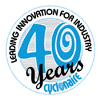

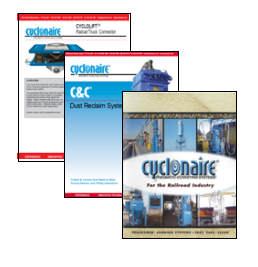 When you are looking into a major purchase or system upgrade, having as much valuable information at hand is important. From basic solutions to complex material handling systems, understanding all available options and researching those options is the first step.
When you are looking into a major purchase or system upgrade, having as much valuable information at hand is important. From basic solutions to complex material handling systems, understanding all available options and researching those options is the first step.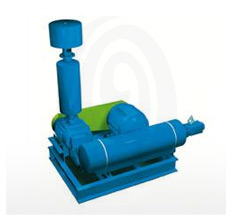 Whether you're looking for connectors to maintain leak-resistant seals, or aerators to speed the discharge of non free-flowing materials, Cyclonaire's full product line of cement and concrete solutions has you covered.
Whether you're looking for connectors to maintain leak-resistant seals, or aerators to speed the discharge of non free-flowing materials, Cyclonaire's full product line of cement and concrete solutions has you covered.
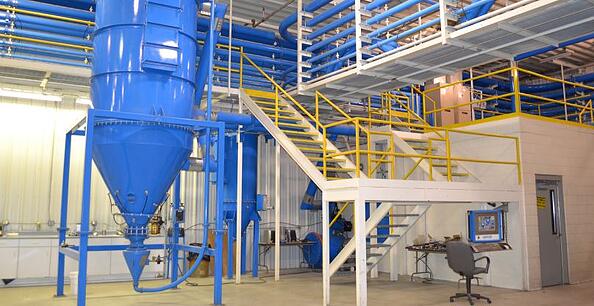

 We live in a connected world. With a few keystrokes, almost any bit of information can be found, from an old friend to a new one. Although online connections are resourceful, talking with people on the web is no substitute for face-to-face networking.
We live in a connected world. With a few keystrokes, almost any bit of information can be found, from an old friend to a new one. Although online connections are resourceful, talking with people on the web is no substitute for face-to-face networking. 
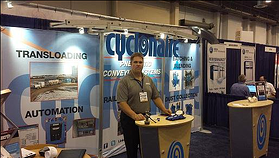 Having material stored in bulk bags is an efficient and productive way to keep operations running smoothly. However, bulk materials and bags are naturally bulky, and can often be difficult to unload or move from one part of a plant or facility to another.
Having material stored in bulk bags is an efficient and productive way to keep operations running smoothly. However, bulk materials and bags are naturally bulky, and can often be difficult to unload or move from one part of a plant or facility to another. 
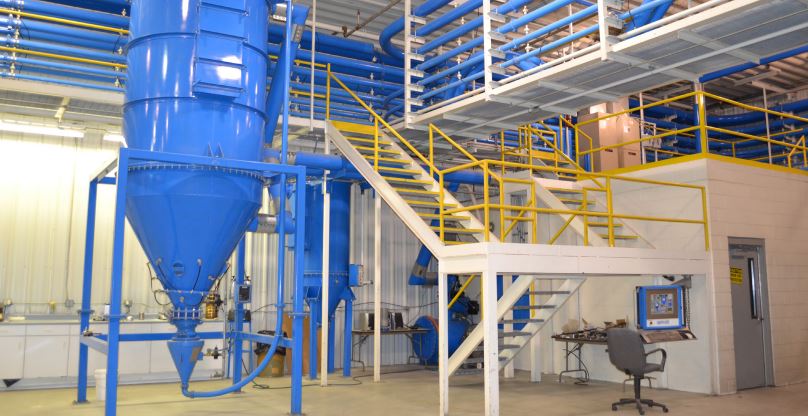
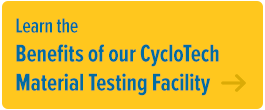
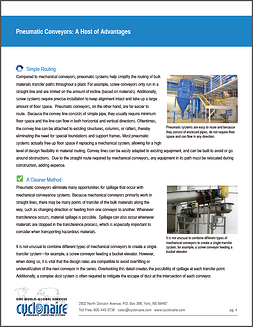 When it comes to dry bulk materials, companies want to use the safest and most cost-effective way to transport and unload their goods. There are two primary methods for accomplishing this critical task, pneumatic and mechanical conveyors. So which one is the right method for you?
When it comes to dry bulk materials, companies want to use the safest and most cost-effective way to transport and unload their goods. There are two primary methods for accomplishing this critical task, pneumatic and mechanical conveyors. So which one is the right method for you?
 Pneumatic conveying systems have had a rich history in industrial processes and plants.
Pneumatic conveying systems have had a rich history in industrial processes and plants. 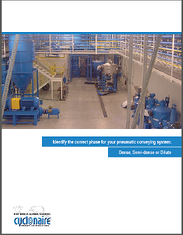 There are few efficient and effective ways to transfer dry bulk materials, other than with a pneumatic conveying system. If you choose pneumatic conveying as your means of moving bulk material, there are a number of critical key questions to be answered—one primary question being: Which conveying phase is right for my material and my exact needs?
There are few efficient and effective ways to transfer dry bulk materials, other than with a pneumatic conveying system. If you choose pneumatic conveying as your means of moving bulk material, there are a number of critical key questions to be answered—one primary question being: Which conveying phase is right for my material and my exact needs?